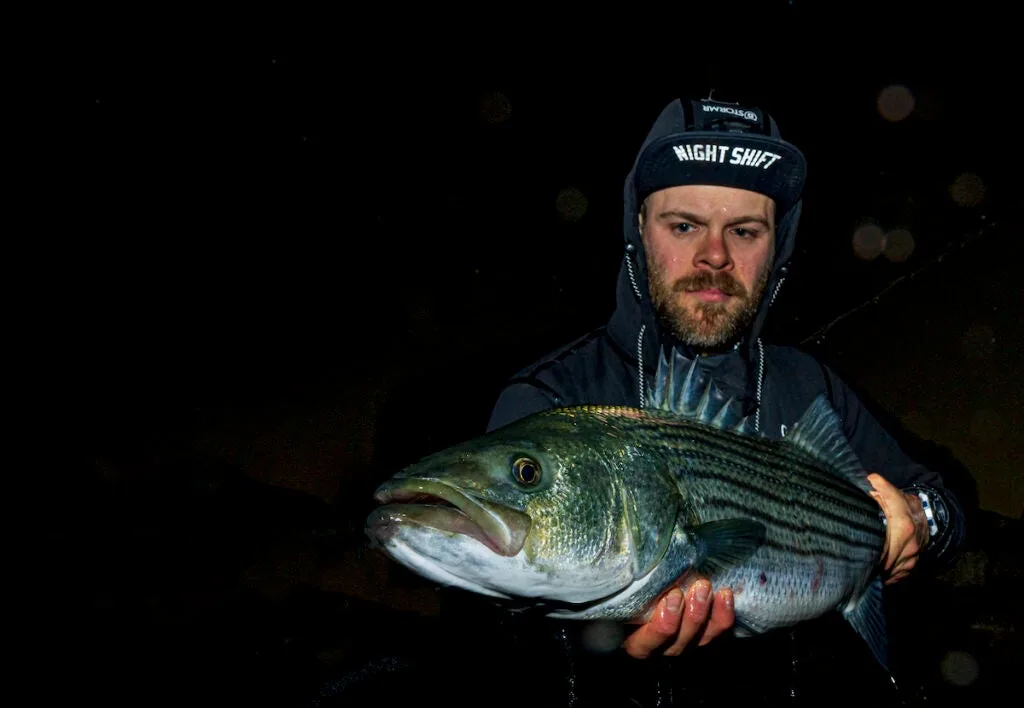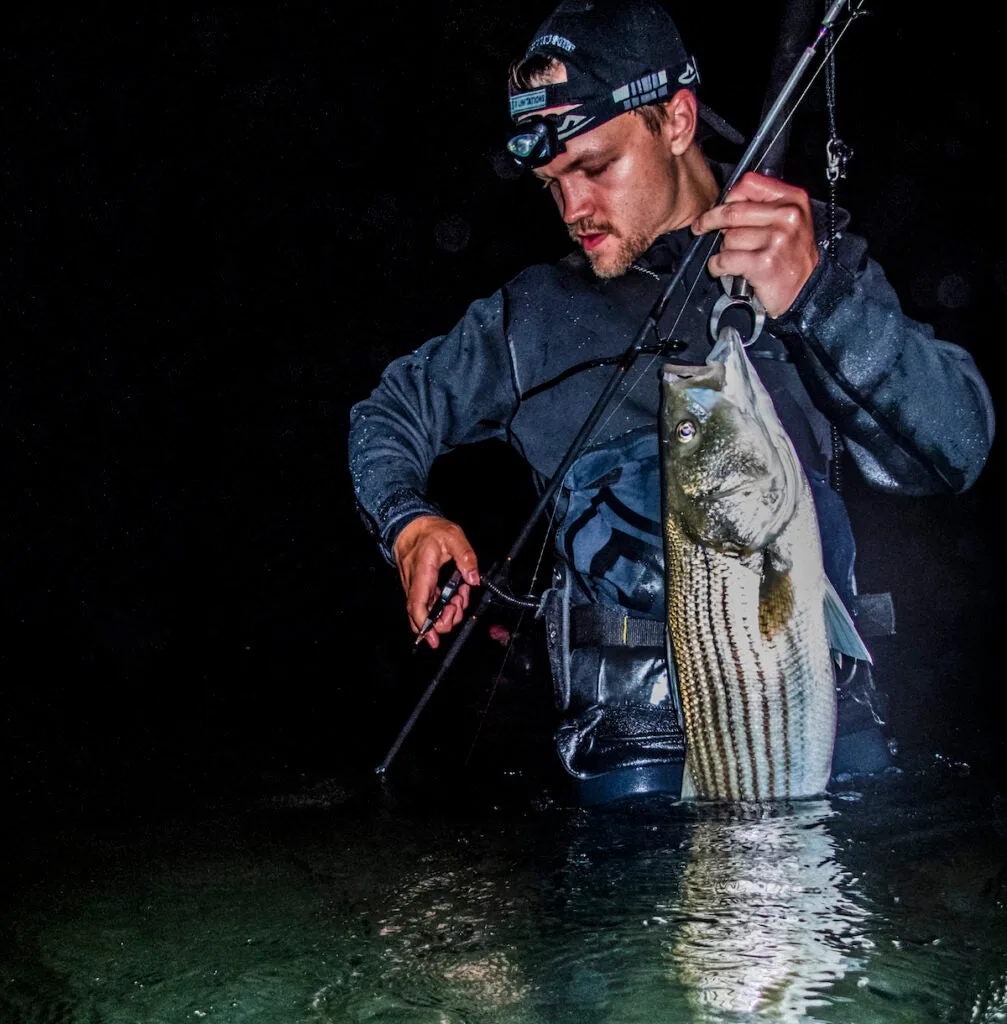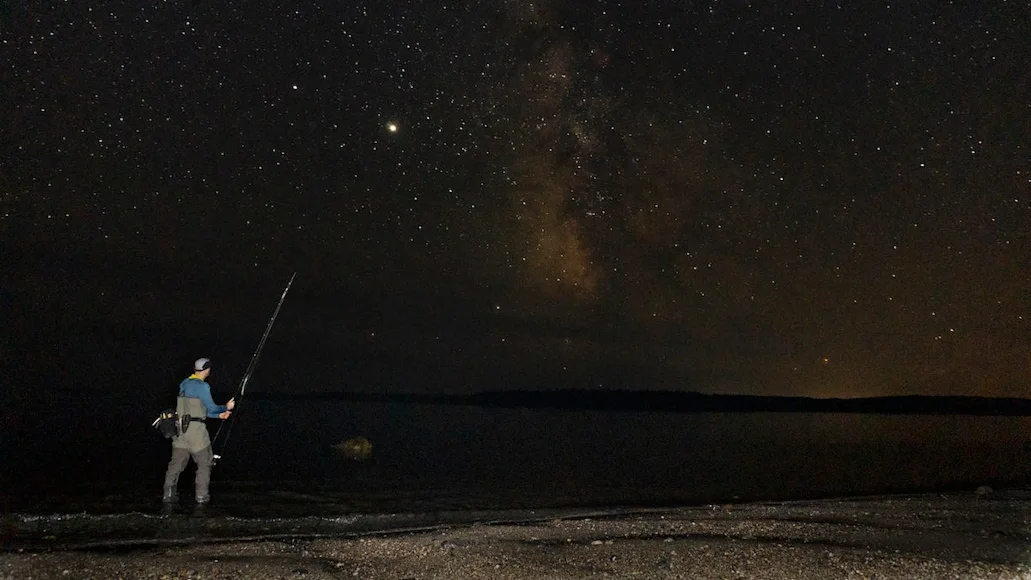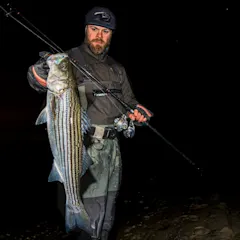While there are a lot of different factors that go into catching striped bass, experienced surf anglers will tell you that fishing “the moons” can make or break a season. In my opinion, if you aren’t targeting crucial times around the new and full moon, you are missing out on the best bites of the year. Here’s why you should be paying closer attention to moons, and how to make the most of them this season.
What Does it Mean to “Fish the Moons?”
When you hear a fisherman say they “fish the moons”, what they really mean is they are specifically fishing the full moon and new moon phases. These are the times when the moon is either closest to the sun (which is the new moon) or furthest away from the sun (which is the full moon). Identifying when the full moon or new moon is going to occur is pretty easy, and can be done months in advance. There are lots of different sources online, but I like timeanddate.com
. I simply use the closest major city to my home—which is Boston—to get an accurate date. However, many tide charts will also have some information about when the new or full moon is occurring, like those at usharbors.com
.
At the most basic level, the reason the moon phases (new and full) are so important is because it is at this time that the gravitational pull of the moon, in combination with the sun, creates the largest tidal volume exchange. This is also commonly known as tide height. Conversely, the “off moon” periods are when the tidal exchanges are at their lowest. These are called the neap tides, and they coincide with the first and third quarter phases. The difference between the maximal tidal exchange each month, and the lowest, can be in excess of 20 percent.

New and full moons bring more water, more bait, and more stripers close to shore.
The Moon Brings More Water, and More Fish
Moon tides (the tides around the full and new moons) result in two very important changes in the inshore environment, which ultimately lead to better fishing. First, they result in deeper water closer to shore at high tide. I’ve found that stripers will use this deeper water to take advantage of feeding opportunities that don’t exist the rest of the month. That is, they can reach areas that are just too shallow the rest of the month. This is particularly true of places with large tide differentials or very shallow spots. It may not seem like a huge difference to us, but I’ve found that moon tides really entice stripers into the shallows where they are within easier reach of the shore-bound fisherman.
The second factor—which I believe is much more important—is all this water moving around the moons creates stronger currents. Stripers love current because, while they may not be fast, they are powerful. They use their large, broom-like tails to overpower prey even in the strongest rips. During the moons, I observe increased current speeds at all of my spots, but in some specific spots it’s the single most critical component of what makes the spot productive. I specifically find the increase in current is most important at spots with low or very low current. I’ve observed that a hypothetical 10 to 30 percent increase in current speed (which is realistic) when the spot only has a 1/2-knot average is way more impactful than if the spot has a 4-knot average (like in an inlet). In some of my spots, the difference between the peak moon periods and off-moon periods can mean quite literally the difference between zero current—and zero fish—and just enough to make it lights-out action all night.
The Moon Also Can Influence Bait Movement
It isn’t just the changes in tidal volume that can put stripers on the feed. Peak lunar phases also influence bait movements, breeding or spawning behavior, and migration timing. First, bait may use the increased depth or current speeds to move from one environment to another, or to simply time their inshore movements. For example, large tides flooding and draining estuaries may flush out young bait fish into the surf. This causes a dramatic increase in local feeding opportunity.
Another example I see is squid coming inshore during the moons in spring. This can trigger stripers to binge feed, making them easier to catch. Next, a lot of reproduction by bait species occurs around the moons—and this happens all season long, depending on the species. This makes prey both susceptible to ambush (as they’re distracted) and also exhausted, making them easier for the striper to eat. Finally, moons trigger species like menhaden, mullet, and herring to migrate—heading north in spring, and south in the fall. This makes them susceptible to attack as well, and many of the best “blitzes” of the year—especially in the fall—will occur around peak moon phases. Simply put, moons move bait.
The combination of all this feeding opportunity, deeper water, and stronger currents makes stripers more aggressive, and puts them in a competitive mode. This all means they’re more likely to make a mistake and hit your plug or fly. It really can be a dramatic difference in their behavior, and has been critical to my success in the surf.
The New Moon is Better to Fish Than a Full Moon
The new moon has one other big advantage over the full moon: it’s not as bright. Fishing at night is the single biggest piece of advice I can offer a new surf angler, or one that wants to take their fishing to the next level. And focusing on the darkest nights of each month (druing the new moon) is your best bet.
Though it may seem like a minor difference, seasoned surf anglers often cite the new moon as being critical to their success. Count me as one of them. I personally see a huge difference in stripers’ behavior during the new moon. Stripers get more aggressive, less fussy, and become much more willing to swim in close where I can reach them with my casts. I think this is especially true if you’re fishing in water that’s relatively shallow (less than 10-feet deep) with lures or flies. I will note, this also applies to boat fishing, but most find it isn’t quite as important as it is to the shore angler.

During the new moon is the best time to target big stripers.
On the other hand, there are times the full moon period can be pretty frustrating when it’s extremely bright. The tides, currents, bait, and all other factors can line up perfectly, but the bite can still be off. Even as frustrating as it sometimes is, I’ll still take a full moon over an off-moon period any night of the week. The fish will be there, you just have to try a little harder to fool them. I suggest being even more careful about your plug selection, and really focus on nailing your presentation during these bright nights. Or, simply fish eels—either alive or dead. Stripers love eating eels so much that they’ll fall for eel baits even on the brighter nights. Another way to trick stripers during full moon lockjaw is to fly fish instead of using lures. I personally do pretty well with the fly rod during full moon phases with moderately sized fish (8- to 20-pounds), as the fly rod is an excellent tool for delivering very realistic profiles in extremely subtle and natural ways.
**Read Next: How to Plan Your Striper Season Now and Catch More Fish Later
**
How Do I Make the Most of the Moon Phases?
If you want to make the most of the full and new moon phases, there are essentially two rules you should adhere to. First, fishing the three to four days around the full- and new-moon phases is your best bet. You’ll see larger tides, stronger currents, and more frequent bait movements. The best fishing may extend over a longer period, but using three to four days to focus your efforts is great if you’re short on time. That being said, the darkness that is so critical to the new moon phase persists for much longer than this. I typically treat the entire period between the last quarter and first quarter as the “dark period” of a calendar month; but if you’re targeting the max tides and currents, you should stick to the three-day window.
The second rule is to still fish the “right” tides and conditions, regardless of the moon stage. That is, just because it’s the three days around the moon, doesn’t mean you can abandon all the other factors that are important for a specific spot or bite. For example, if you fish a location that is best on an incoming tide, then you can’t suddenly start fishing it on the outgoing because it’s the new moon—you must wait until the right tide comes around. The way I handle this is simple: I fish the period closest to the moon that aligns with the right tides, winds, or bait movements around my spot. Unfortunately, this means it sometimes falls well outside the three- to four-day window, but that’s the way it goes; you can’t force it. Just make sure you plan ahead so you don’t miss it either way.






